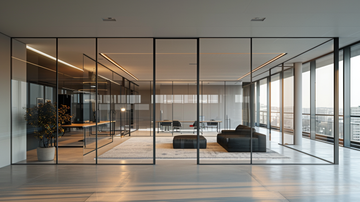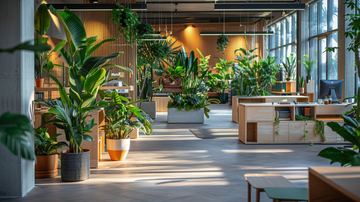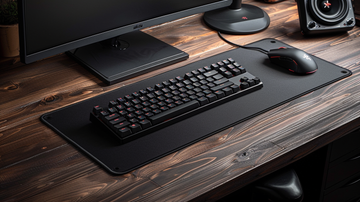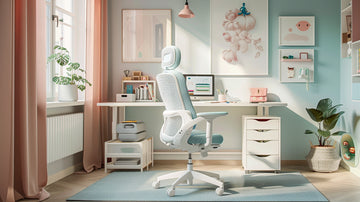Introduction
Choosing the right table lamp for your workspace is an important decision that can greatly impact your productivity, comfort and overall work experience. With the wide variety of table lamp options available, it can be overwhelming to know where to start. The key is identifying your lighting needs and preferences to find the table lamp that best suits your unique workspace.
Consider Lamp Type
When choosing a table lamp for work, one of the first things to consider is the type of light bulb or lamp. There are several common options:
- Incandescent bulbs - These are the traditional bulbs that produce light by heating a tungsten filament. They provide a warm, natural light but are not very energy efficient.
- LED bulbs - LEDs are energy efficient and long-lasting. They produce a bright, cool light. LED table lamps are a good option for task lighting. According to https://bgalight.com/types-of-table-lamps-and-their-advantages-and-disadvantages/, LED lamps have the advantages of energy efficiency, long lifespan, and durability.
- Fluorescent bulbs - Fluorescent bulbs are energy efficient and inexpensive. However, they produce a harsher, less natural light that may cause eye strain. They are not ideal for desk lamps.
- Halogen bulbs - Halogen lamps provide a bright, white light simlar to incandescent. They are more energy efficient but also generate a lot of heat.
For desk work, LED table lamps are often the best choice as they provide focused, eye-friendly illumination without consuming much energy. However, personal preference is also a factor.
Lamp Style
There are several common lamp styles to consider for a work table lamp:
- Architect lamps have an articulated arm that allows flexible positioning of the light. This style is good if you need to direct light to specific tasks on your desk (https://www.beeslighting.com/collections/table-lamps).
- Banker's lamps have a green glass shade and a flexible neck, originally used by bankers to illuminate work. This old-fashioned style adds vintage character (https://www.dwr.com/lighting-table-lamps?lang=en_US).
- Library lamps are taller in stature with a weighted base. The large drum or urn shaped shade directs light downward over a wide area. This style is suited for providing ambient lighting (https://www.beeslighting.com/collections/table-lamps).
- Modern lamps have clean, minimalist designs often using metal and glass. They provide task lighting and complement contemporary decor (https://www.dwr.com/lighting-table-lamps?lang=en_US).
- Tiffany lamps feature stained glass shades in nature-inspired Art Nouveau patterns. The colorful glass casts a warm, ambient glow ideal for traditional decor (https://www.beeslighting.com/collections/table-lamps).
Consider your personal style and room decor when selecting a lamp design. The lamp should coordinate with your existing furnishings for a cohesive look.
Lamp Height
When selecting a table lamp, it's important to consider the height. The standard heights for common table lamps are:
- Desk lamps: 20-28 inches - Desk lamps need to be tall enough to shine over monitors and work items on the desk surface.
- Reading lamps: 14-18 inches - Reading lamps are shorter since they just need to illuminate a book or reading area.
- Accent lamps: 12-18 inches - Accent lamps provide mood lighting, so very tall heights are not necessary.
Take measurements of where you plan to place the lamp to determine the ideal height range. Having the lamp at the proper height will ensure the light shines where you need it without causing glare or eye strain.
Lamp Base Materials
The base material of a table lamp significantly impacts its look, feel, and durability. Common materials for lamp bases include:
Metal: Metal lamps like brass, steel, or nickel often have an industrial modern aesthetic. Metal is very durable but can show fingerprints. Citing from source, metal bases should be sealed to prevent tarnishing.
Glass: Glass lamp bases provide a sleek, elegant look. Citing from source, glass is fragile but scratch-resistant. Opt for tempered or reinforced glass for durability.
Ceramic: Ceramic and porcelain bases have a refined, artistic aesthetic. According to this source, ceramic is prone to cracking but is an excellent heat insulator.
Consider the aesthetics, durability, and workspace needs when selecting a lamp base material. Metal and glass tend to be sleeker, while ceramic and porcelain offer more traditional charm.
Light Direction
When choosing a desk lamp, the direction of light it provides is an important consideration for reducing eye strain and glare while working. There are three main types of light direction to consider:
Downlight: A downlight lamp directs light straight down onto the work surface. This is the most common and preferred type of desk lamp, as it minimizes shadows and glare on documents, laptop screens, etc. Properly positioned downlight lamps allow you to clearly see your work without straining your eyes (source).
Uplight: Uplight lamps direct light up towards the ceiling, creating indirect, ambient lighting. While uplights can illuminate a room well, they are not ideal as task lighting for focused desk work. The lack of directed light can cause squinting and eye fatigue.
Ambient: Ambient lamps provide general, multidirectional lighting to lightly fill a room. Using an ambient lamp as your sole desk lighting will likely be insufficient for doing detailed work. However, combining ambient lighting with a directed downlight desk lamp can create a comfortable workspace.
Look for adjustable desk lamps that allow directing the light precisely where needed. Avoid lamps with intense uplight or glare. The best desk lamps concentrate bright, focused downlight on the desktop to reduce eye strain (source).
Lamp Shades
The lampshade is one of the most important aspects to consider when choosing a table lamp. The material, shape and size of the lampshade will greatly impact the amount and quality of light the lamp produces.
Some common lampshade materials include fabric, plastic, glass, metal and paper. Fabric lampshades like linen or silk generally provide a soft, diffused light. Plastic and glass can create a more focused bright light. Paper lampshades allow some light to filter through for ambiance. Metal lampshades direct light downwards. Choose a material suited to the lighting needs of your workspace.
Lampshade shape also affects light direction. Drum shades direct light downwards. Empire shades spread light upwards and downwards. Coolie shades concentrate light upwards. Bell shades and pyramid shades spread light outwards. Select a shape that casts light where needed, such as down on a desk surface.
Proper lampshade size helps maximize light distribution. Measure the lamp base diameter and choose a shade about 1.5-2 times wider to evenly distribute light. Small shades concentrate light while large shades spread it out. Check manufacturer size guides to match shades to lamp bases.
The right lampshade can make all the difference in creating a well-lit workspace. Carefully consider the material, shape and size to find the perfect lampshade for your needs.
For more tips, see this guide on choosing lampshades from Lux Lampshades: https://www.luxlampshades.com/blogs/lux-blog/lampshade-buying-guide-to-choose-a-perfect-lampshade
Smart vs Regular
Smart lamps have gained popularity in recent years as technology advances. They offer some advantages over regular lamps:
- Voice Control - Smart lamps can be controlled with voice commands using virtual assistants like Alexa or Google Assistant.
- Scheduling - Set schedules to have the lamp turn on or off automatically at certain times of day.
- Colors - Many smart lamps allow you to adjust color temperature and colors for different lighting moods.
- Dimming - Brightness can be controlled through an app or by voice.
- Away Mode - Smart lamps can be set to turn on and off at different times to give the appearance someone is home.
However, regular lamps do have some benefits:
- Cost - Smart lamps are generally more expensive than regular lamps.
- Simplicity - No need for apps, connectivity or programming. Just plug in and turn on.
- Reliability - Smart lamps rely on connectivity and apps working properly.
Consider your needs and preferences before deciding between a smart vs regular table lamp.
Light Appearance
The appearance of the light that the lamp produces is crucial for creating a comfortable workspace. Consider the following factors:
Color Temperature: The color temperature refers to how "warm" or "cool" the light appears. Warm light is more yellow/orange while cool light is more blue/white. For office work, aim for a lamp with a color temperature between 3000K-5000K for an energizing but not harsh light.
Brightness: Make sure the lamp is bright enough for tasks like reading and writing, but not so bright as to cause glare on your computer screen or strain your eyes. Look for a lamp with an adjustable brightness or dimmer so you can customize as needed. The lamp's lumens indicate its brightness - a good range is 800-1200 lumens for an office desk lamp.
Conclusion
When choosing a table lamp for work, there are several key factors to consider. The lamp type, style, height, base, light direction, and lampshade all play an important role in finding the right lamp for your needs. Additionally, deciding between a smart lamp with advanced features versus a regular lamp comes down to your budget and necessity for things like app control and scheduling.
In summary, first determine the amount and quality of light you need for your workspace. Task lamps with directional lighting are ideal for focusing illumination precisely where you need it. For softer overall lighting, diffuse lamps work better. The lamp height should allow the bulb to be slightly above eye level when seated. Stylish lamps with stable weighted bases look professional, while lamp shades affect the light's ambiance and brightness. Smart lamps provide extra functionality for those willing to pay more. In the end, choose a high quality table lamp tailored to your workspace lighting needs and personal style.
The right table lamp can make working at home more enjoyable and productive. Consider all the options and think about your own needs to select a lamp that provides great task lighting, visual appeal, and functionality for your home office space.









